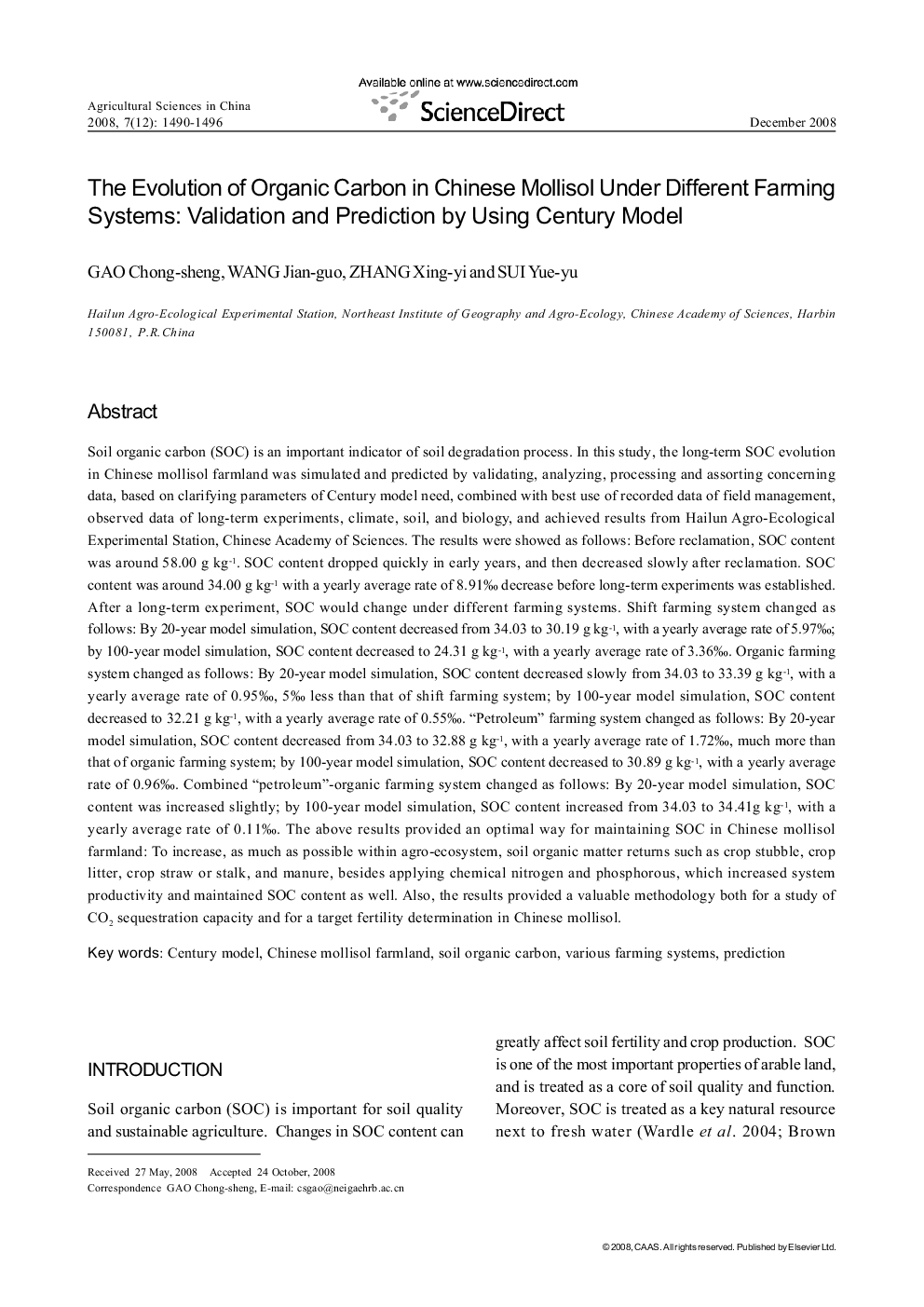| Article ID | Journal | Published Year | Pages | File Type |
|---|---|---|---|---|
| 4490510 | Agricultural Sciences in China | 2008 | 7 Pages |
Soil organic carbon (SOC) is an important indicator of soil degradation process. In this study, the long-term SOC evolution in Chinese mollisol farmland was simulated and predicted by validating, analyzing, processing and assorting concerning data, based on clarifying parameters of Century model need, combined with best use of recorded data of field management, observed data of long-term experiments, climate, soil, and biology, and achieved results from Hailun Agro-Ecological Experimental Station, Chinese Academy of Sciences. The results were showed as follows: Before reclamation, SOC content was around 58.00 g kg−1. SOC content dropped quickly in early years, and then decreased slowly after reclamation. SOC content was around 34.00 g kg−1 with a yearly average rate of 8.91% decrease before long-term experiments was established. After a long-term experiment, SOC would change under different farming systems. Shift farming system changed as follows: By 20-year model simulation, SOC content decreased from 34.03 to 30.19 g kg−1, with a yearly average rate of 5.97%; by 100-year model simulation, SOC content decreased to 24.31 g kg−1, with a yearly average rate of 3.36%. Organic farming system changed as follows: By 20-year model simulation, SOC content decreased slowly from 34.03 to 33.39 g kg−1, with a yearly average rate of 0.95%, 5% less than that of shift farming system; by 100-year model simulation, SOC content decreased to 32.21 g kg−1, with a yearly average rate of 0.55%. “Petroleum” farming system changed as follows: By 20-year model simulation, SOC content decreased from 34.03 to 32.88 g kg−1, with a yearly average rate of 1.72%, much more than that of organic farming system; by 100-year model simulation, SOC content decreased to 30.89 g kg−1, with a yearly average rate of 0.96%. Combined “petroleum”-organic farming system changed as follows: By 20-year model simulation, SOC content was increased slightly; by 100-year model simulation, SOC content increased from 34.03 to 34.41g kg−1, with a yearly average rate of 0.11%. The above results provided an optimal way for maintaining SOC in Chinese mollisol farmland: To increase, as much as possible within agro-ecosystem, soil organic matter returns such as crop stubble, crop litter, crop straw or stalk, and manure, besides applying chemical nitrogen and phosphorous, which increased system productivity and maintained SOC content as well. Also, the results provided a valuable methodology both for a study of CO2 sequestration capacity and for a target fertility determination in Chinese mollisol.
